Accepted Scientific Name: Ferocactus glaucescens
Cactaceae (Britton & Rose) 3: 137. 1922

Ferocactus glaucescens f. nudus Photo by: Valentino Vallicelli
Spineless with woolly top. This cultivar varies from pure nude specimens to plants with one or few spine per areoles (Partially Nudum), but usually the spines are present only in young plant (or on new lateral branches) and completely disappear in mature stems.
Origin and Habitat: Garden origin (Nursery produced). The wild species occurs over a considerable range from Guanajuato to Querétaro, San Luis Potosí and Hidalgo (Meztitlan, Toliman and Jacala) in Eastern central Mexico.
Synonyms:
See all synonyms of Ferocactus glaucescens
back
Accepted name in llifle Database:Ferocactus glaucescens (DC.) Britton & RoseCactaceae (Britton & Rose) 3: 137. 1922Synonymy: 13
Cultivars
(1):
back
Common Names include:
ENGLISH: Nude Blue Barrel Cactus
Description: Ferocactus glaucescensSN|1532]]SN|1532]] f. nudus is the nice spineless form of Ferocactus glaucescensSN|1532]]SN|1532]] This cultivar varies from pure nude specimens to plants with one or few spine per areoles (Partially nudum), but usually the spines are present only in young plant (or on new lateral branches) and completely disappear in mature stems, all the other characteristics namely size and shape of stems, flowers, fruits, roots etc. clearly show that they are conspecific.
Habit: Solitary or basally suckering, barrel cactus. Multiple heads are produced as the plant ages and can form a very large mound.
Stems: Glaucous grey, up to 55 cm in height, 50 cm in diameter. Globular depressed at the apex, it becomes shortly columnar as it ages.
Ribs: 11 to 15 prominent, acute, slightly tuberculate and expanded under areoles, 2 cm high.
Areoles: Greyish-white felted, young areoles circular, becoming elongate in mature flowering plants up to 15 mm long, constricted between the flower and the spine-bearing section, 2-3 cm apart or even less in old plants.
Spines: Absent or very few (1 to 3 not distinguishable from radials to centrals) irregularly scattered on the areoles of young individuals.
Flowers: Lemon yellow, funnel-shaped, 3-4 cm in diameter. The tepals are oblong, lanceolate, silky, shining; the margins are finely fringed. Stamen, style and stigma are yellow. Stigma lobes: 12-15.
Blooming season: Late spring and summer. The flowers last a very long time. The plants start flowering when about 13 cm in diameter.
Fruits: White, 2 cm long with the remnants of the flowers attached.
Subspecies, varieties, forms and cultivars of plants belonging to the Ferocactus pottsii complex
(This Taxon belong to a group of six closely allied species. The group is: Ferocactus alamosanus, Ferocactus schwarzii, Ferocactus reppenhagenii, Ferocactus glaucescens, & Ferocactus echidne)
Bibliography: Major references and further lectures
1) Edward Anderson “The Cactus family” Timber Press, Incorporated, 2001
2) James Cullen, Sabina G. Knees, H. Suzanne Cubey "The European Garden Flora Flowering Plants: A Manual for the Identification of Plants Cultivated in Europe, Both Out-of-Doors and Under Glass" Cambridge University Press, 11/Aug/2011
3) David R Hunt; Nigel P Taylor; Graham Charles; International Cactaceae Systematics Group. "The New Cactus Lexicon" dh books, 2006
4) N. L. Britton, J. N. Rose “The Cactaceae. Descriptions and Illustrations of Plants of the Cactus Family.” Volume 4, The Carnegie Institution of Washington, Washington 1923
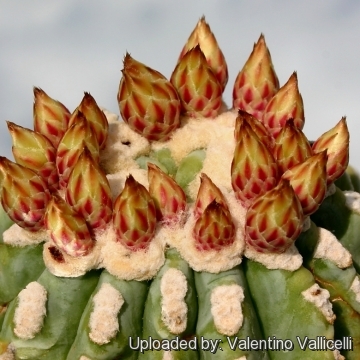 Ferocactus glaucescens f. nudus Photo by: Valentino Vallicelli
Ferocactus glaucescens f. nudus Photo by: Valentino Vallicelli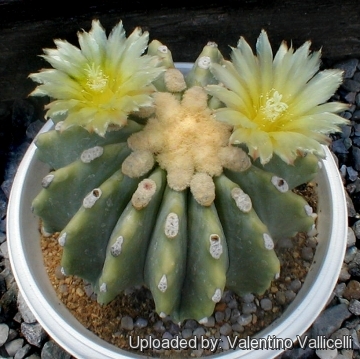 Ferocactus glaucescens f. nudus Photo by: Valentino Vallicelli
Ferocactus glaucescens f. nudus Photo by: Valentino Vallicelli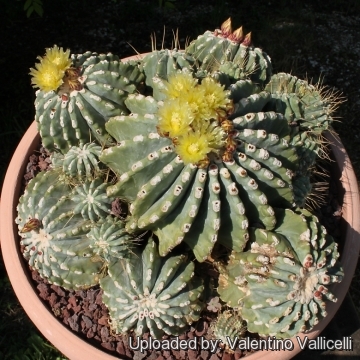 Ferocactus glaucescens f. nudus Photo by: Valentino Vallicelli
Ferocactus glaucescens f. nudus Photo by: Valentino Vallicelli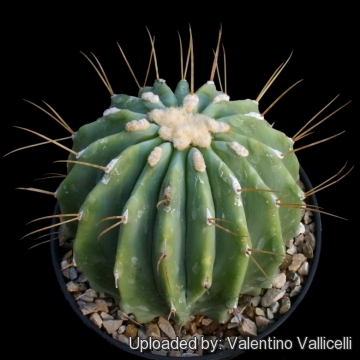 Ferocactus glaucescens f. nudus Photo by: Valentino Vallicelli
Ferocactus glaucescens f. nudus Photo by: Valentino Vallicelli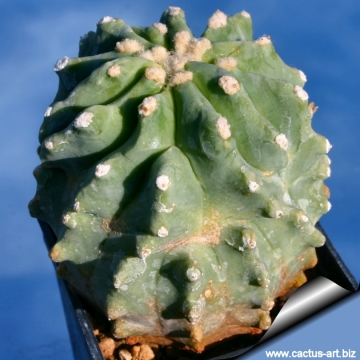 Ferocactus glaucescens f. nudus Photo by: Cactus Art
Ferocactus glaucescens f. nudus Photo by: Cactus Art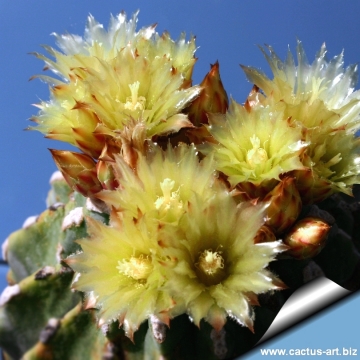 Ferocactus glaucescens f. nudus Photo by: Cactus Art
Ferocactus glaucescens f. nudus Photo by: Cactus Art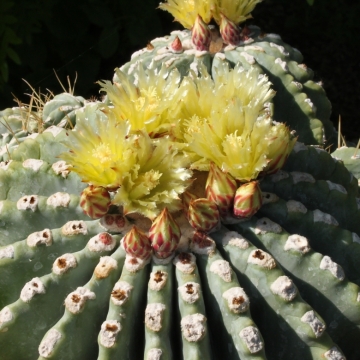 Ferocactus glaucescens f. nudus Photo by: Cactus Art
Ferocactus glaucescens f. nudus Photo by: Cactus Art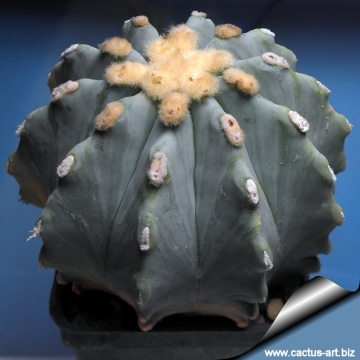 Ferocactus glaucescens f. nudus Photo by: Cactus Art
Ferocactus glaucescens f. nudus Photo by: Cactus ArtCultivation and Propagation: Plants are slow-growing to start, but they are easy to grow and require little care once they have reached a nice flowering size. Ferocactus glaucescensSN|1532]]SN|1532]] is suited for any rich, well drained soil in full sun throughout the year. Pot culture: it grows best in a fairly roomy, well-drained container filled with a porous cactus soil mixture that doesn't contain too much humus. To insure robust plants, water and fertilize during the aestival growth cycle; this plant need plenty of water (indicatively, about once a week). But it's necessary to avoid wetting the bodies of these plants while they are in sunlight. A wet cactus in the sun light can cause sun burning, which can lead to scars or even fungal infections and death. In winter keep it completely dry at 10°C. This usually aids in maintaining a healthier plant, but can tolerate sporadic light frost.
Propagation: Cuttings (if available) made from pieces of the stem of any size can be detached and laid aside for a few days to allow a protective "skin" to form over the cut. They can then be planted in pots. Place them in a spot where they'll receive sun, and do not water until the soil becomes fairly dry. After a while the soil can be moistened regularly but never kept constantly saturated.
Your Photos
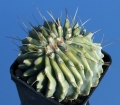
by Valentino Vallicelli




















